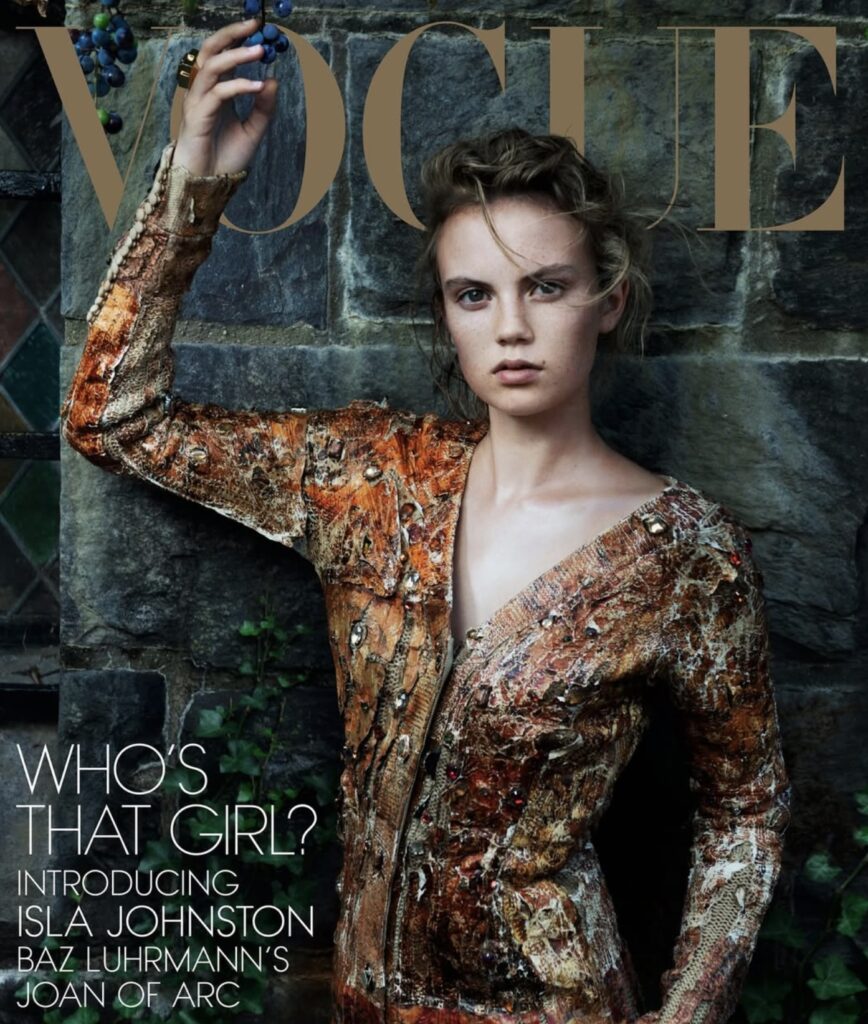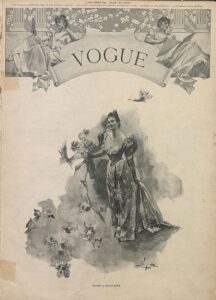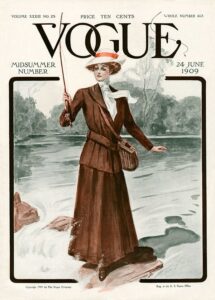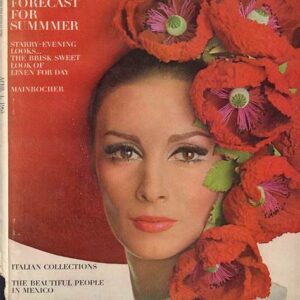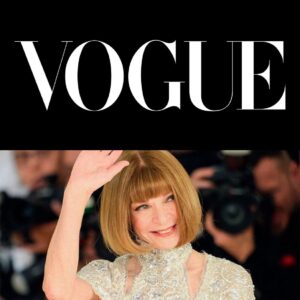The very word Vogue carries a resonance far beyond its syllables. Derived from the Italian vogare — “to row, to sail, to be carried along” — the word evolved in French to mean “fashion, style, or trend.” When Arthur Baldwin Turnure founded Vogue in New York City in 1892, the name encapsulated a vision: not simply to chronicle garments, but to capture the spirit of what was “in motion” in culture. Just as a boat carried by a current moves with grace and direction, Voguesymbolized the fluidity of style, the forward thrust of society, and the rhythm of collective taste. To be “in vogue” meant to be aligned with the cultural tide.
From this linguistic foundation, Vogue has grown into the most influential fashion publication in history. Over more than 130 years, it has transitioned from an elite New York society gazette into a global media empire, shaping how we see beauty, design, politics, and identity. Its story is inseparable from the story of modern fashion itself.
Birth of an American Magazine (1892)
Arthur Turnure, a wealthy Manhattan businessman, launched Vogue on December 17, 1892. The magazine’s initial audience was the New York upper class, whose lives revolved around debutante balls, opera nights, horse shows, and the emerging codes of high society. Its early pages were filled with gossip, etiquette guides, and illustrations of Parisian and American fashions.
Turnure’s vision was less about democratizing fashion than preserving the taste of an elite social circle. Yet the title, chosen with care, hinted at something broader: Vogue wasn’t just about class—it was about style as a living, evolving force. In those years, the word “vogue” had already been absorbed into English from French, meaning “fashion, mode, popularity.” The etymology from Italian vogare gave the name a sense of propulsion, movement, and flow.
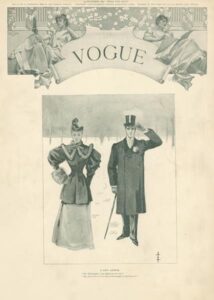
Condé Nast and the Modernization of Fashion Publishing (1909–1930s)
When Turnure died in 1906, Vogue passed into the hands of Condé Montrose Nast, an advertising executive with visionary instincts. Nast purchased the magazine in 1909, and his stewardship transformed it from a social weekly into a fashion bible. He pioneered subscription-based publishing, securing a loyal readership, and elevated the magazine with lavish photography, art deco layouts, and international editions.
The 1910s and 1920s were crucial decades: Vogue became a showcase for new designers such as Coco Chanel, Paul Poiret, and Jeanne Lanvin, all of whom redefined women’s fashion. Nast’s expansion into the UK (1916) and France (1920) cemented Vogue as a transatlantic arbiter of taste.
The magazine’s etymological roots—to sail, to move forward—mirrored its evolution. In the Jazz Age, fashion was in constant flux: hemlines rose, corsets disappeared, and women claimed a new visibility in society. Vogue was not merely reporting trends but steering the current.
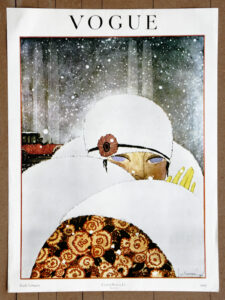
War, Resilience, and Reinvention (1930s–1950s)
The Great Depression and World War II tested Vogue’s resilience. During lean years, Nast maintained its quality, framing fashion as both aspirational and escapist. Under editors like Edna Woolman Chase, the magazine championed elegance as a form of endurance.
In wartime, Vogue also became politically relevant. Its photographers—most notably Lee Miller, who documented the liberation of Paris and concentration camps—reminded readers that fashion could not be isolated from history. The word vogue, once tied only to frivolity, expanded to mean cultural currency: to be “in vogue” was to be attuned to the moment, whether in Paris couture or in the realities of global conflict.
The Age of Diana Vreeland and Fashion as Fantasy (1960s–1970s)
The arrival of Diana Vreeland as editor-in-chief in 1963 marked a flamboyant era. Vreeland reimagined Vogue as a theater of dreams. She championed exoticism, surrealism, and youth culture, infusing the magazine with color and eccentricity. Richard Avedon’s photographs, Twiggy’s mod looks, and psychedelic fashion spreads made Vogue synonymous with the cultural revolution of the 1960s.
Vreeland understood the deeper power of the word vogue. It wasn’t just about fashion as clothing—it was about zeitgeist, mood, and imagination. She famously said, “The eye has to travel,” echoing the sense of movement embedded in the word’s Italian origin. Under her reign, Vogue became a vessel sailing boldly through the turbulent waters of counterculture, feminism, and youth rebellion.
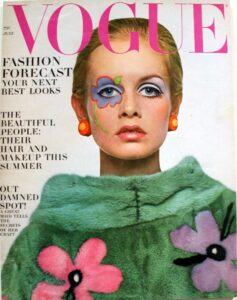
Anna Wintour and Global Dominance (1988–present)
If Vreeland made Vogue fantastical, Anna Wintour made it authoritative. Taking the helm in 1988, Wintour modernized the magazine for the age of celebrity, commerce, and globalization. Her first cover, featuring model Michaela Bercu in a Christian Lacroix jacket and Guess jeans, symbolized a break from rigid couture toward a high-low mix—fashion as accessible aspiration.
Under Wintour, Vogue expanded its empire: Vogue Italia, Vogue Paris (now Vogue France), Vogue China, Vogue India, Vogue Arabia, and more created a network of localized yet globally influential voices. The magazine became not just a publication but an institution—its September issue an annual cultural event, its “Met Gala” the most-watched red-carpet spectacle in the world.
In this era, the etymological current of vogue—the flow of popular taste—reached new meaning. No longer confined to elite society, fashion became democratic, fueled by celebrity culture, digital platforms, and street style. Wintour steered Vogue into this current, ensuring it remained not merely relevant but essential.
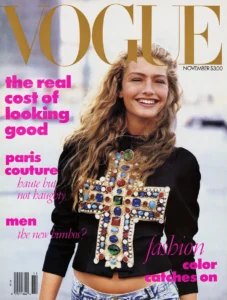
Etymology, Symbolism, and Legacy
The linguistic journey of the word vogue illuminates the magazine’s trajectory. From vogare (to row, to sail) in Italian, it passed into French as vogue—meaning “fashion, popularity, reputation.” By the 16th century, English had adopted it. The idea of “being in vogue” meant being carried along by the prevailing current of taste, aligned with the movement of the times.
The metaphor of sailing is apt: fashion is never static, always shifting with winds of politics, economics, art, and culture. Vogue the magazine has embodied this voyage. At different times, it has been an elite yacht, a glamorous cruise liner, a daring speedboat. But always it has been moving—steering, following, and reflecting the waves of culture.
The magazine’s power lies not just in chronicling style but in shaping what style means. Through covers, photography, and editorial voice, Vogue has taught generations to read fashion as both personal expression and social commentary. To “be in vogue” has thus come to signify not only wearing the right clothes but inhabiting the right cultural moment.
Vogue in the Digital Era (2000s–Today)
The rise of the internet and social media threatened the authority of print magazines. Blogs, influencers, and Instagram disrupted the old hierarchy of taste. Yet Vogue adapted by building a digital empire: Vogue.com, Vogue Runway, video series, and an omnipresent social media presence.
Its prestige remains tied to history, but its influence thrives on reinvention—exactly what the etymology suggests. Just as vogare implies forward motion, Vogue sails continuously into new territories: sustainability, diversity, and inclusivity. Covers featuring Serena Williams, Rihanna, or Billie Eilish represent a broadening definition of beauty and influence.
In many ways, the word vogue has come full circle: it once meant the fleeting popularity of a style; now, through the magazine’s legacy, it implies authority, permanence, and cultural leadership.
Impression
The story of Vogue is the story of fashion as cultural current. From its Italian roots in vogare to its present as a global brand, the word “Vogue” has always meant movement, trend, flow. Founded in 1892 as a society weekly, transformed by Condé Nast, radicalized by Diana Vreeland, and solidified by Anna Wintour, Vogue has steered through every tide of modernity.
To read Vogue is to witness the shifting waters of style, politics, gender, race, and identity. To be featured in its pages is to be recognized as culturally relevant, historically significant, aesthetically resonant. And to understand its name is to see why: Vogue is not just a magazine—it is the current itself.
No comments yet.

